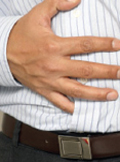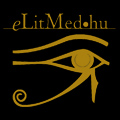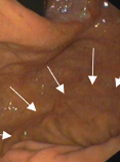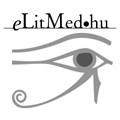The eLitMed.hu medical portal uses computer cookies for convenient operation. Detailed information can be found in the Cookie-policy.
LAM Extra for General Practicioners - 2012;4(02)
Content
[THE RISK OF NONSTEROIDAL ANTIINFLAMMATORY DRUGS]
[During the past ten years, a number of original publications, reviews and metaanalyses were published on the cardiovascular (CV) safety of nonsteroidal antiinflammatory drugs (NSAIDs). These data were summarised in several previous publications. As this group of medicines is very frequently used and many of them are available over the counter (OTC), their risks require particular attention. Recently, new analyses have been published on previously discussed preparations as well as on new drugs that had been omitted from previous analyses (paracetamol, aceclofenac), thus, it is important to review these data and draw attention again to differences in side effects among NSAIDs.]
[ANTIDIABETIC THERAPY OF PATIENTS WITH TYPE 2 DIABETES - THE ROLE OF INCRETIN MIMETICS]
[Incretin mimetics represent a new group of antidiabetic drugs. They bind to their own receptor on the beta-cell membrane and increase insulin secretion in a glucosedependent manner. Thus, they rarely cause hypoglycaemia. Furthermore, they significantly reduce body weight and other cardiovascular risk factors. Accordingly, they can be considered as an optimal group of antidiabetic drugs. The author reviews the clinical efficacy and safety of currently available incretin mimetics.]
[THE DIAGNOSTIC VALUE OF A GLASS OF SODA WATER IN CASE OF A CARDIAC SPACE-OCCUPYING LESION]
[INTRODUCTION - Large hiatal hernias may result in cardiac space-occupying lesions. Our case study discusses the clinical aspects and the possible diagnostic approaches for such large hiatal hernias that cause cardiac compression. CASE REPORT - In an elderly patient with no cardiovascular symptoms, transthoracic echocardiography revealed a left atrial space-occupying mass. The diagnosis regarding the origin of the cardial mass was clarified by a glass of soda water drunk by the patient during echocardiography, as it resulted in a decrease in the inhomogenous echodensity of the mass and the appearance of “contrast bubbles” within it. This phenomenon suggested the presence of a large hiatal hernia compressing the heart, which was confirmed by gastroscopy and upper gastrointestinal barium examination. CONCLUSION - Drinking soda water during transthoracic echocardiography can help to diagnose lesions that look like intracardial tumours.]
[THE NEW BRITISH RECOMMENDATIONS FOR THE TREATMENT OF LOWER BACK PAIN ON THE BASIS OF THE NEW NICE GUIDELINES - COMPARISON WITH THE HUNGARIAN THERAPEUTIC PRACTICE]
[The new NICE guidelines on lower back pain emphasise the importance of clinical assessment. Radiological imaging methods are used primarily to exclude severe diseases, such as tumour, infection, trauma or inflammation. It’s crucial to inform patients and encourage them to use self-management and stay active. Pain management is guided by the analgesic ladder. A complex physical and psychological treatment is used, which involves a structured exercise programme, manual therapy and acupuncture, taking into account the preferences of the patient. Depending on the aetiology, surgical intervention should be considered in therapy-resistant cases. Finally, the authors compare the above guidelines with the Hungarian practice in this field.]
1.
Clinical Neuroscience
[Headache registry in Szeged: Experiences regarding to migraine patients]2.
Clinical Neuroscience
[The new target population of stroke awareness campaign: Kindergarten students ]3.
Clinical Neuroscience
Is there any difference in mortality rates of atrial fibrillation detected before or after ischemic stroke?4.
Clinical Neuroscience
Factors influencing the level of stigma in Parkinson’s disease in western Turkey5.
Clinical Neuroscience
[The effects of demographic and clinical factors on the severity of poststroke aphasia]1.
2.
3.
4.
5.






